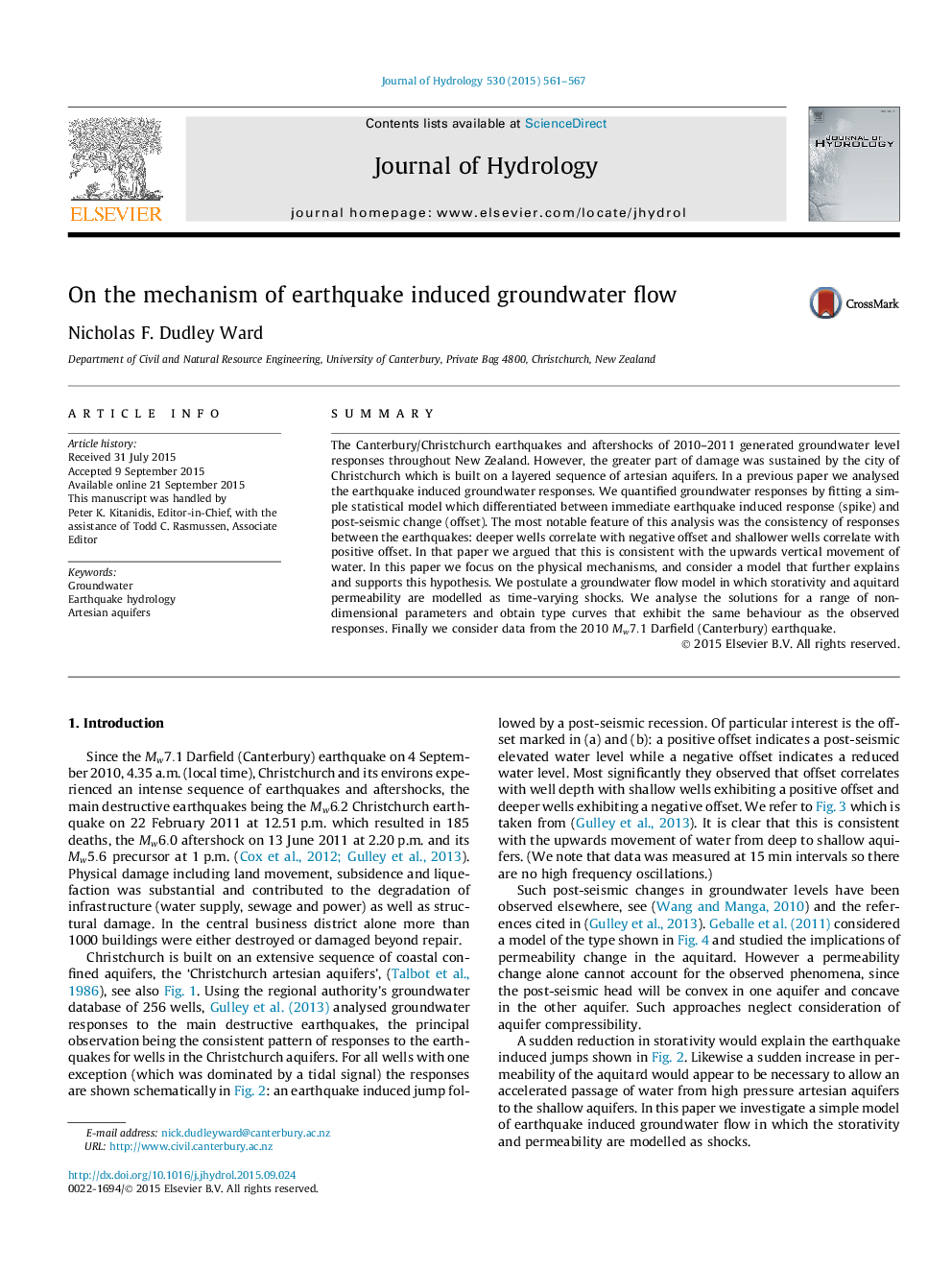| Article ID | Journal | Published Year | Pages | File Type |
|---|---|---|---|---|
| 6410238 | Journal of Hydrology | 2015 | 7 Pages |
â¢We analyse a model of groundwater responses to the recent Canterbury/Christchurch earthquakes.â¢Changes in aquifer properties are modelled as shocks.â¢We argue that the model explains the essential mechanisms of earthquake induced changes.â¢We fit the model to data from the 4 September 2010 earthquake and interpret the results.
SummaryThe Canterbury/Christchurch earthquakes and aftershocks of 2010-2011 generated groundwater level responses throughout New Zealand. However, the greater part of damage was sustained by the city of Christchurch which is built on a layered sequence of artesian aquifers. In a previous paper we analysed the earthquake induced groundwater responses. We quantified groundwater responses by fitting a simple statistical model which differentiated between immediate earthquake induced response (spike) and post-seismic change (offset). The most notable feature of this analysis was the consistency of responses between the earthquakes: deeper wells correlate with negative offset and shallower wells correlate with positive offset. In that paper we argued that this is consistent with the upwards vertical movement of water. In this paper we focus on the physical mechanisms, and consider a model that further explains and supports this hypothesis. We postulate a groundwater flow model in which storativity and aquitard permeability are modelled as time-varying shocks. We analyse the solutions for a range of non-dimensional parameters and obtain type curves that exhibit the same behaviour as the observed responses. Finally we consider data from the 2010 Mw7.1 Darfield (Canterbury) earthquake.
